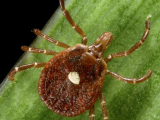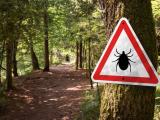Aug 13, 2012
Angola reaches polio interruption milestone
Angola has gone a year without reporting a new polio case, an important milestone in the global fight against the disease, according to an Aug 10 statement from the United Nations Children's Fund (UNICEF). The last case was reported in July 2011 in a 14-month-old child from Uige province in northwestern Angola. The number of polio cases dropped from 33 in 2010 to five in 2011. UNICEF attributed Angola's progress in fighting the disease to its partnerships to improve surveillance and to increases in the quality and reach of its mass vaccination campaigns, among other things. Control efforts have been focused on polio virus reservoirs, which include Luanda and Benguela, along with the border with the Democratic Republic of Congo (DRC). Evelize Fresta, the country's deputy health minister, said in the statement that the Angolan government has paid 89% of the cost of the polio vaccination campaigns. For the first time, Angola reached 95% of
children who were targeted in the campaigns. Koenraad Vanormelingen, UNICEF's representative in Angola, said that interrupting polio is significant but urged officials not to become complacent. Angola had been polio-free 2001 to 2004, but the disease reemerged in 2005 and spread to Namibia, the DRC, and the Republic of Congo.
Aug 10 UNICEF press release
Maine reports jump in anaplasmosis cases
Maine is seeing an increase in cases of the tick-borne disease anaplasmosis this year, with 38 cases reported so far, compared with 26 all of last year, the Maine Center for Disease Control and Prevention reported in an Aug 9 health alert. The bacterial disease is carried by the deer tick (Ixodes scapularis), which also transmits Lyme disease and babesiosis. The symptoms include fever, headache, malaise, body aches, cough, arthralgia, stiff neck, and confusion, the agency said. It said the case count is expected to increase further, since most cases are reported in the summer and fall. Stephen Sears, MD, MPH, Maine's state epidemiologist, told the Bangor Daily News that anaplasmosis "seems to be increasing not only in the numbers but in its distribution. It's being seen a little farther up the coast and a little deeper into the interior sections." The disease, formerly known as human granulocytic ehrlichiosis, was first recognized
in humans in the mid 1990s and became reportable in 1999, according to the US Centers for Disease Control and Prevention (CDC). Nationally, the number of cases reported to the CDC increased from 348 in 2000 to 1,006 in 2008. The case-fatality rate is less than 1%. The disease is caused by the bacterium Anaplasma phagocytophilum and is treated with antibiotics.
Aug 9 Maine CDC health alert
Aug 9 Bangor Daily News story
US CDC anaplasmosis information




















